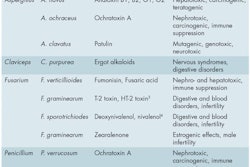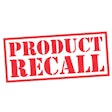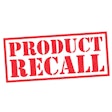I am not a pet owner, veterinarian or employee of a petfood manufacturer. Nor do I hold any strong views on the “raw” petfood (RP) vs. conventional diets debate. Assuming the products are palatable, nutritionally complete, legal and safe from a food safety viewpoint, owners should have freedom of choice to feed their pets with the diet they choose.
As the global petfood market grows in value, the “humanization” of petfood, e.g., creation of products that mimic human food, is an important driver of growth. Arguably, RP products based on minced or diced meats best fulfil this criterion as they don’t look like conventional diets and are often marketed on their use of “natural” and “human grade” materials.
The term “human grade” does not, however, necessarily mean that a food is safe. Salmonella is ubiquitous and Salmonellosis in humans has been attributed to a wide range of foods and commodities including raw meats, fish, poultry, vegetables, fruit, herbs, spices and even processed foods like peanut butter. It follows, therefore, that when we use these ingredients, Salmonella contamination in RP is a possibility.
Businesses across the supply chain, from raw materials suppliers through to the consumer, use food safety management systems (FSMS) to ensure the food we or our pets eat is safe; e.g., Salmonella levels meet legislative and regulatory requirements. Widely acknowledged as being the most effective means of ensuring safe food, FSMS based on the Hazard Analysis and Critical Control Points (HACCP) process are used in both the human food sector (manufacturing and food service) and petfood industry. However, experience in the human food sector shows that unless the business embraces the concepts of establishing pre-requisite programs (PRPs) prior to HACCP implementation and food safety culture (food safety behavior) development, HACCP effectiveness is reduced. Maintaining effectiveness also requires commitment to these on an ongoing basis.
Although no definitive list of PRPs exists, they can be considered as a “support system” and typically include areas like personnel, training, good laboratory practice, good manufacturing practice, preventative maintenance and quality systems, etc. From experience in the industry, while many businesses have well-developed HACCP plans, PRPs can become neglected or are overlooked. If these foundations are weak, the risk of HACCP system failure increases and unsafe food can enter the supply chain. Close examination of these foundations is often a good starting point to assess your capability to supply safe petfood.
Building on the use of a HACCP/PRP-based FSMS, many food safety experts believe improvements in food safety behavior (food safety culture) is the key to further improving food safety and reducing the risk of foodborne illness. As an example of the importance of support programs, ask yourself, “What are the procedures, training and facilities for hand washing like in my raw petfood plant?” Now ask yourself, “What is my food safety culture like? Do I lead by example in hand washing when I enter and leave the plant? How do I ensure that all my staff are trained in the basics of food hygiene (e.g., the importance of hand washing)?” If any of these are inadequate, their effectiveness in ensuring safe food is compromised and the risk of unsafe food increases.
Based on the ubiquitous nature of Salmonella, control of this pathogen is a key goal in the human food supply chain. In the future, strategies like Salmonella eradication in livestock and poultry and new technologies might offer a means of controlling the risk of Salmonellosis. However, collectively as an industry we also need to ensure that currently and in the future our HACCP-based FSMS maintain their effectiveness through control of and commitment to factors within our scope, including PRPs and development of a food safety culture.
Through maintaining and continuous improvement of HACCP effectiveness, our industry is in a stronger position to defend any criticism that the products we offer are unsafe.
















